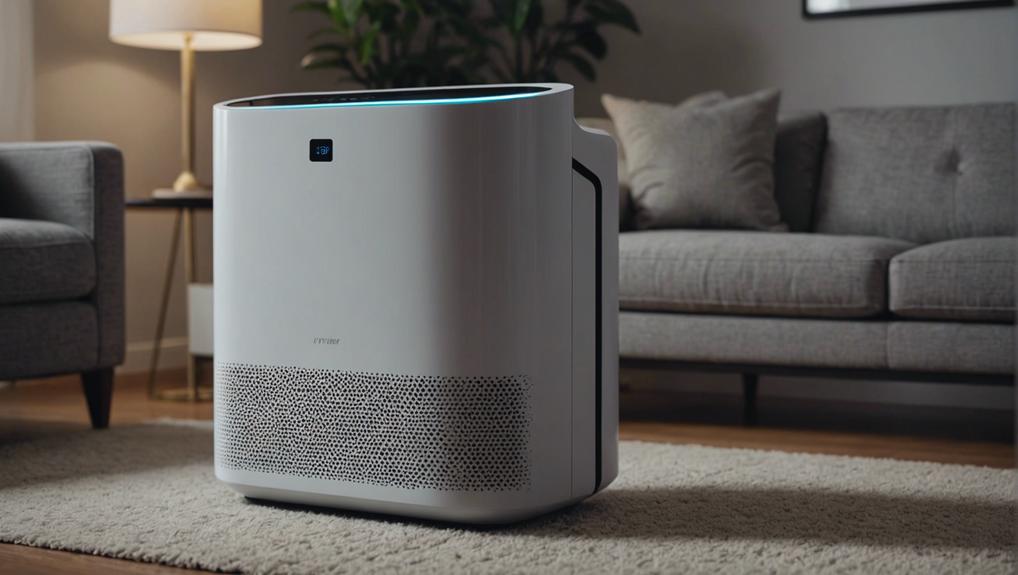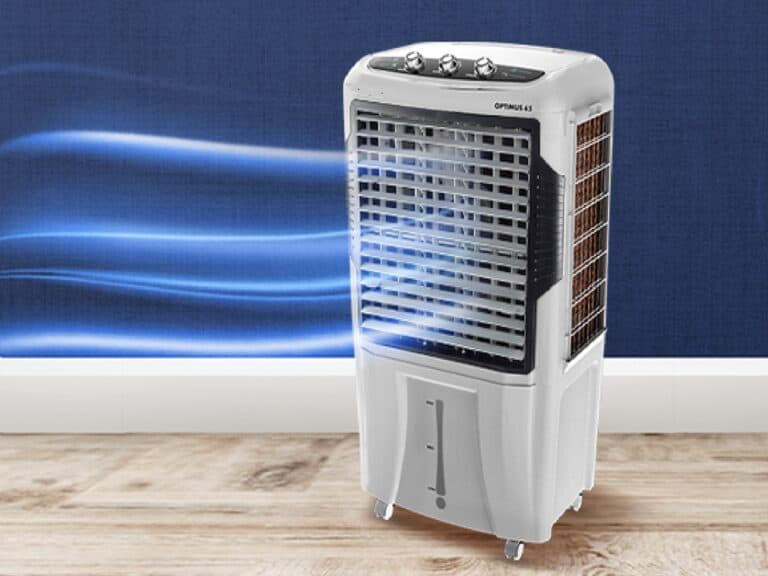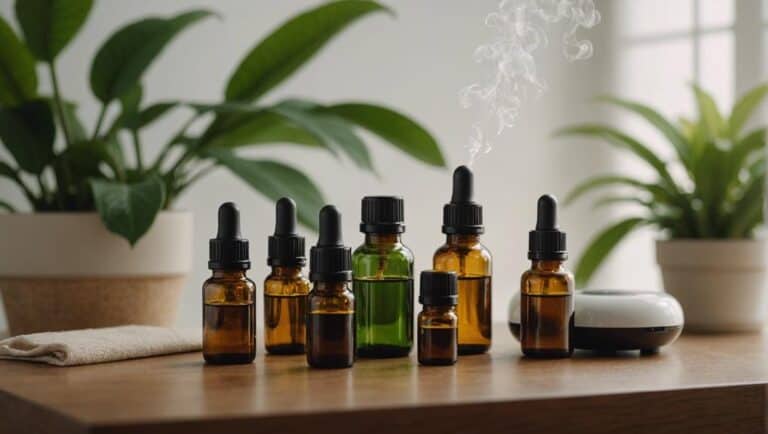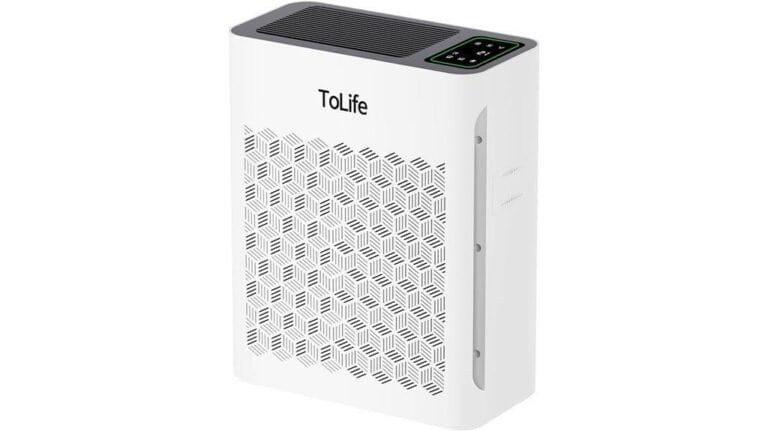Mastering Air Purifier Technology Guide
As we navigate the intricate domain of air purifier technology, we uncover a wealth of information that can revolutionize our indoor air quality. From deciphering CADR ratings to exploring the intricate workings of HEPA filters, every component plays a vital role in ensuring cleaner, fresher air. But what about the lesser-known aspects like PECO technology and strategic placement of purifiers? These nuances hold the key to revealing the full potential of air purifiers, transforming our living spaces into sanctuaries of pure air.
Clean Air Delivery Rate Explained
When evaluating air purifiers, understanding the Clean Air Delivery Rate (CADR) is essential for determining their efficiency in cleaning the air quickly and effectively. The CADR ratings, which measure an air purifier’s performance in cubic feet per minute, offer a thorough indication of how rapidly it can purify the air in your space.
By covering key pollutants like smoke, pollen, and dust, CADR ratings provide a detailed assessment that allows us to make informed decisions when choosing an air purifier. Higher CADR values signify faster purification, ensuring that the air in your room becomes cleaner more rapidly.
The certification of CADR ratings by the Association of Home Appliance Manufacturers (AHAM) guarantees standardized testing and enables easy comparison between different air purifiers. Understanding CADR empowers us to select the most suitable air purifier based on our room size and specific air quality requirements.
Understanding CADR Ratings
One essential aspect to take into account when evaluating air purifiers is understanding the significance of CADR ratings. CADR, or Clean Air Delivery Rate, measures the volume of clean air that an air purifier can produce in a minute. Higher CADR ratings indicate a faster and more efficient air purification process, making them suitable for larger rooms. These ratings, provided by AHAM (Association of Home Appliance Manufacturers), allow consumers to compare the performance of different air purifiers effectively. CADR takes into consideration three types of particles – tobacco smoke, dust, and pollen – providing a thorough evaluation of the purifier’s performance. By understanding CADR ratings, users can select the most effective air purifier based on their room size and specific air quality needs.
| CADR Ratings | Room Size | AHAM |
|---|---|---|
| High | Large Rooms | Reliable |
| Low | Small Rooms | Efficient |
| Medium | Medium Rooms | Effective |
Importance of Pre-Filters
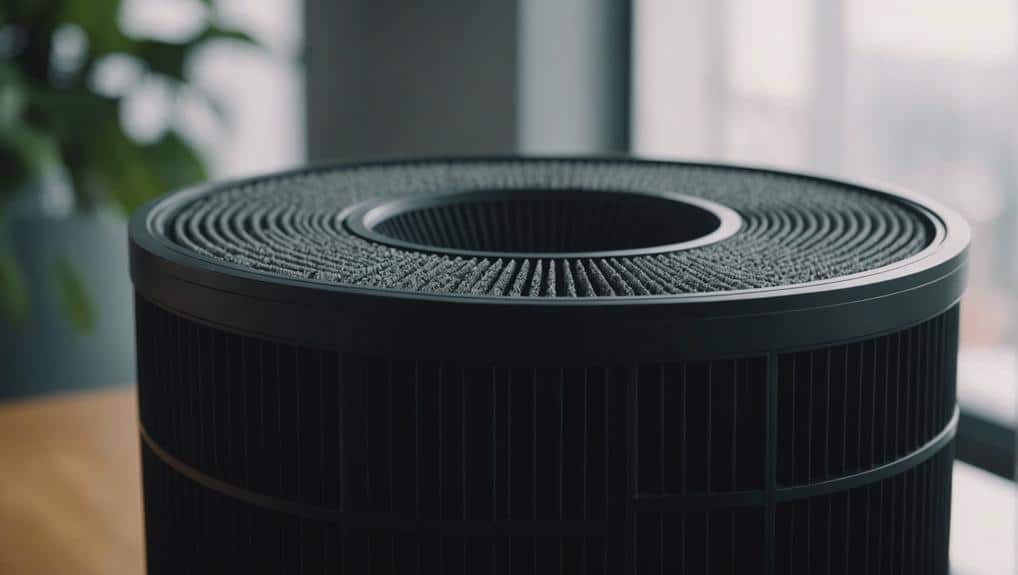
Enhancing air purifier efficiency, pre-filters play a crucial role in capturing large particles like dust, hair, and pet dander before they reach the main filters. By preventing these larger contaminants from clogging the HEPA filters, pre-filters help prolong the lifespan of the more delicate main filtration system. This not only guarantees that the HEPA filters can focus on capturing smaller particles effectively but also makes maintenance more manageable and cost-effective. Whether washable or replaceable, pre-filters are essential components that enhance the overall performance of air purifiers.
Effective pre-filtration is the cornerstone of improving indoor air quality. By capturing large particles, pre-filters not only safeguard the HEPA filters but also ensure that the air purifier operates at its best. This initial line of defense sets the stage for the main filters to target smaller particles effectively, resulting in cleaner and fresher indoor air. Understanding the importance of pre-filters is key to maximizing the efficiency and longevity of your air purifier.
Significance of HEPA Filters
HEPA filters are pivotal components in purifying indoor air by capturing particles as small as 0.3 microns, guaranteeing cleaner and healthier environments. These filters are highly efficient, capable of trapping up to 99.97% of particles like dust, pollen, mold spores, and pet dander. For individuals with air quality concerns, especially those suffering from allergies or respiratory conditions, HEPA filters are recommended by health experts. The acronym ‘HEPA’ stands for High-Efficiency Particulate Air, highlighting the filter’s superior performance in removing contaminants.
In the domain of air purification, HEPA filters are key components that greatly enhance air quality in homes and indoor spaces. By incorporating HEPA filters into air purifiers, these devices ensure thorough filtration, removing harmful airborne particles and providing clean, purified air. For those seeking control over their indoor environment and aiming to address air quality concerns effectively, investing in air purifiers equipped with HEPA filters is a strategic and advantageous choice.
Addressing Odors and Gases
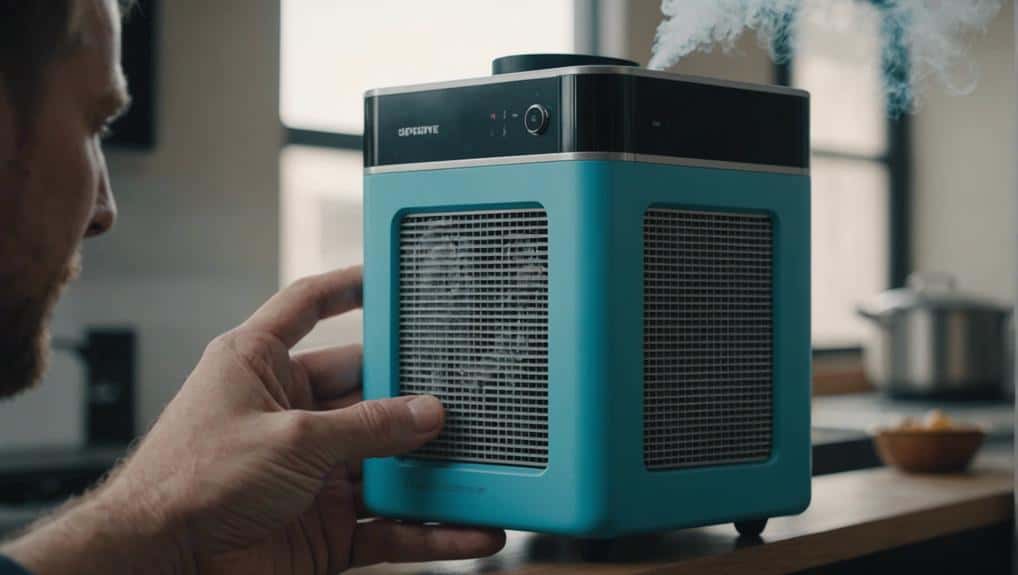
When addressing indoor air quality concerns, dealing with odors and gases becomes an essential aspect in ensuring a fresh and healthy environment. Activated carbon filters play an important role in eliminating odors and gases caused by volatile organic compounds (VOCs).
These filters are highly effective in neutralizing VOCs, common indoor pollutants that contribute to poor air quality. By understanding the significance of activated carbon filters in air purifiers, one gains control over removing harmful gases and unpleasant smells from indoor spaces.
Air purifiers equipped with activated carbon filters efficiently target VOCs, ensuring a cleaner and more breathable indoor environment. The process of filtration through activated carbon is crucial for neutralizing odors and gases, providing a proactive approach to maintaining air quality.
In the quest for cleaner indoor air, employing air purifiers with activated carbon filters is an important step towards eliminating odors and VOCs, promoting a healthier living space.
Final Purification Stage Overview
Moving from addressing odors and gases to the final purification stage, we explore additional cleaning capabilities provided by ionizers and UV light in air purifiers. Ionizers emit negatively charged ions to enhance air cleaning by aiding in capturing particles. This technology is effective in reducing allergens and pollutants, contributing to a cleaner indoor environment.
UV light, on the other hand, utilizes UV-C wavelengths to neutralize bacteria and viruses, further enhancing the purification process.
When considering air purifiers with ionizers, it’s vital to confirm they’re CARB certified to guarantee they’re ozone-free and safe for indoor use. This certification provides peace of mind regarding the air purifier’s performance and safety standards. While UV light can be effective in eliminating harmful microorganisms, its efficacy may be limited by the short exposure time typically provided in air purifiers.
Understanding the capabilities of ionizers and UV light in the final purification stage empowers users to make informed decisions when selecting air purifiers for their specific needs.
Review: Winix A231
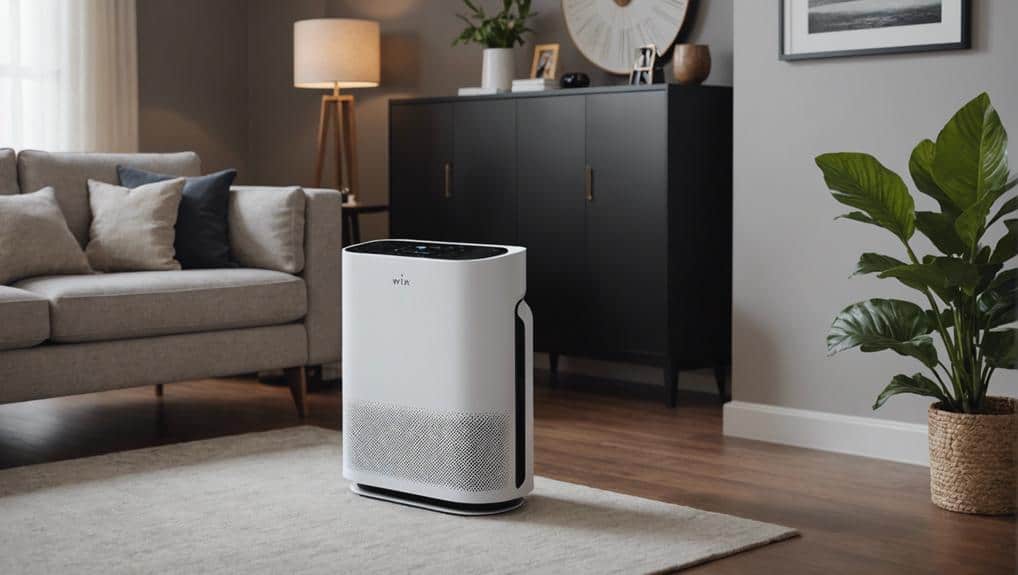
Reviewing the Winix A231 air purifier reveals its impressive CADR rating for various particles and its advanced 3-stage filtration system. The Winix A231 boasts a CADR rating of 230 for dust, pollen, and smoke particles, ensuring efficient air purification. Its 3-stage filtration system consists of a pre-filter, True HEPA filter, and activated carbon filter, guaranteeing the removal of particles as small as 0.3 microns. This air purifier is designed for rooms up to 230 square feet, making it ideal for bedrooms, offices, or living areas. Additionally, the Winix A231 features smart sensors that adjust the operation mode based on the air quality, providing continuous clean air without manual intervention. With Energy Star certification, this air purifier not only cleans the air effectively but also does so with energy efficiency in mind.
| Feature | Details |
|---|---|
| CADR Rating | 230 (Dust, Pollen, Smoke) |
| Filtration System | Pre-filter, True HEPA, Activated Carbon Filter |
| Room Coverage | Up to 230 square feet |
Review: Molekule Air Mini
We can now shift our focus to the Molekule Air Mini, an air purifier designed for rooms up to 250 square feet, offering efficient air purification in smaller spaces.
The Molekule Air Mini utilizes PECO technology to destroy pollutants such as VOCs, bacteria, mold, and viruses at a molecular level, ensuring cleaner air for your space.
With a 360-degree air intake, this air purifier maximizes air flow, circulating and purifying the air effectively throughout the room. Its coverage area is optimized for smaller spaces, providing thorough purification in rooms within the specified size range.
Additionally, the Molekule Air Mini is energy efficient, consuming only 20 watts of power on its highest setting, making it a cost-effective option for continuous use. Its sleek design and portable size enhance its versatility, allowing for easy placement in various room setups and environments.
Review: Rabbit Air A3
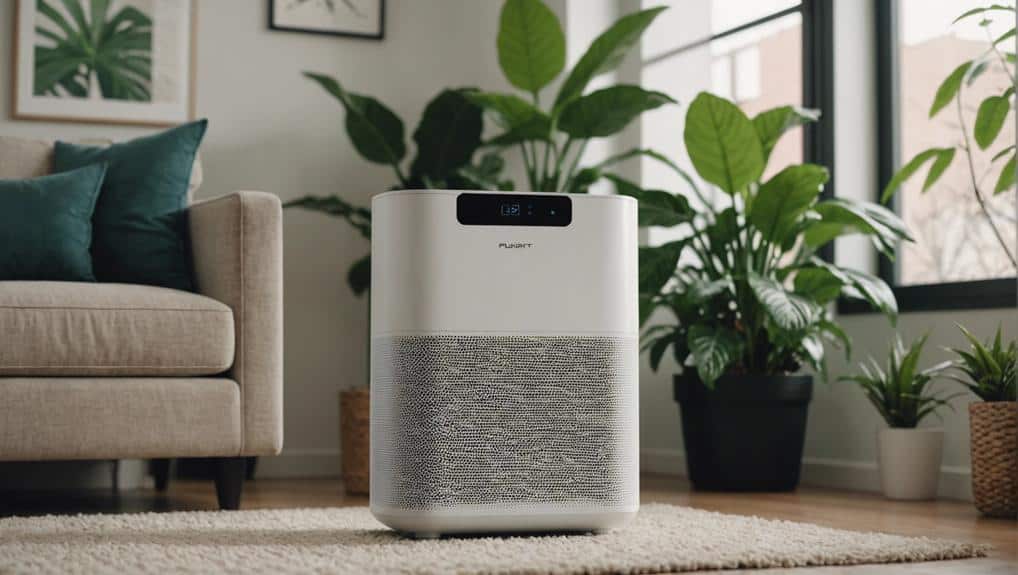
We’re excited to explore the performance analysis and design features of the Rabbit Air A3 air purifier.
The 6-stage filtration system and high CADR of this model promise excellent air cleaning for larger spaces.
Additionally, the customizable filter options and smart features like Wi-Fi connectivity make this air purifier a versatile and convenient choice.
Performance Analysis
After evaluating the Rabbit Air A3 air purifier’s performance, it’s evident that its CADR ratings and extensive filtration system make it a reliable choice for effectively purifying the air in larger living spaces.
The CADR rating of 208 for dust, 200 for pollen, and 193 for smoke guarantees efficient air purification, while the 6-stage filtration system, including a pre-filter, medium filter, HEPA filter, customized filter, activated carbon filter, and ion generator, enhances the overall air quality.
With a coverage area of up to 1,070 square feet, this air purifier is suitable for large rooms or open living spaces.
Additionally, the Rabbit Air A3 features smart capabilities such as Wi-Fi connectivity, air quality sensors, and a customizable filter replacement indicator, providing users with advanced control over their indoor air environment.
Design Features
The sleek and modern design of the Rabbit Air A3 air purifier, complemented by customizable front panels, enhances both its aesthetic appeal and practicality for users.
This air purifier boasts a 5-stage filtration system, including a pre-filter, medium filter, HEPA filter, customized filter, and activated carbon filter, ensuring thorough air purification.
Designed for large rooms up to 1,070 square feet, the Rabbit Air A3 offers efficient purification with a CADR rating of 208 for pollen, 200 for dust, and 193 for smoke.
Additionally, its smart features, such as Wi-Fi connectivity and a mobile app, provide users with convenient control and monitoring options, allowing for a personalized air purification experience that prioritizes user control and ease of use.
Best Practices for Air Purifier Placement
For ideal air purification effectiveness, consider the placement of your air purifier in key areas of your home. To address specific needs and improve indoor air quality, strategically place your air purifier in different rooms.
The bedroom is an ideal location for an air purifier, guaranteeing clean air exposure during sleep when our bodies are most vulnerable. High traffic areas like the living room and kitchen benefit from air purifiers to reduce contaminants brought in from outside. Larger rooms may require larger air purifiers to effectively cover the entire space and provide thorough purification.
When placing your air purifier, ensure proper airflow by keeping inlets and outlets unobstructed. Additionally, utilizing the air purifier as a fan can offer cooling benefits while efficiently purifying the air.
Conclusion
To sum up, mastering air purifier technology involves understanding key elements like CADR, pre-filters, HEPA filters, and activated carbon filters for efficient air purification.
Utilizing advanced technologies like ionizers and UV light, along with proper placement of air purifiers in different rooms, guarantees cleaner indoor air.
By following best practices and choosing quality air purifiers like the Winix A231, Molekule Air Mini, and Rabbit Air A3, we can create a healthier living environment for ourselves and our loved ones.
